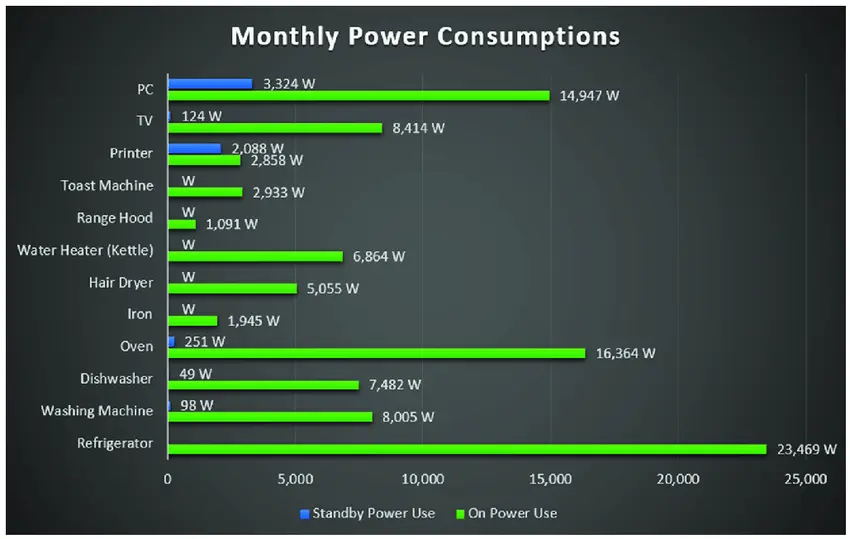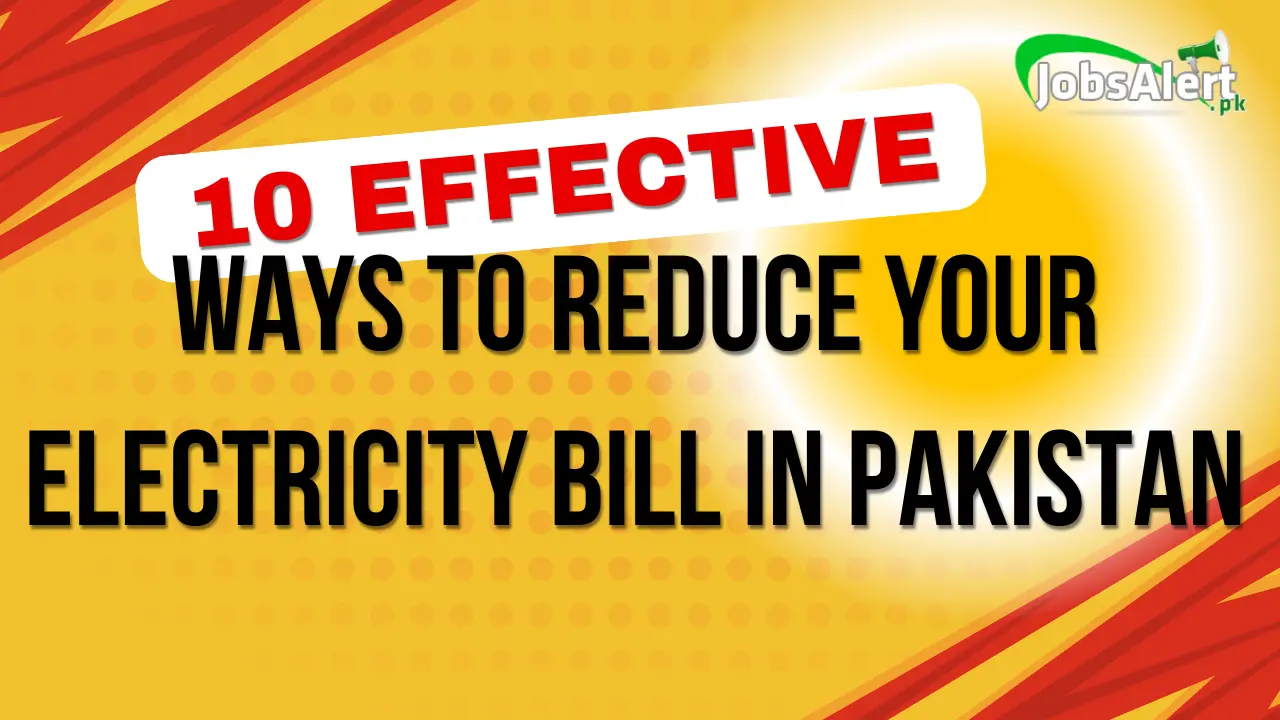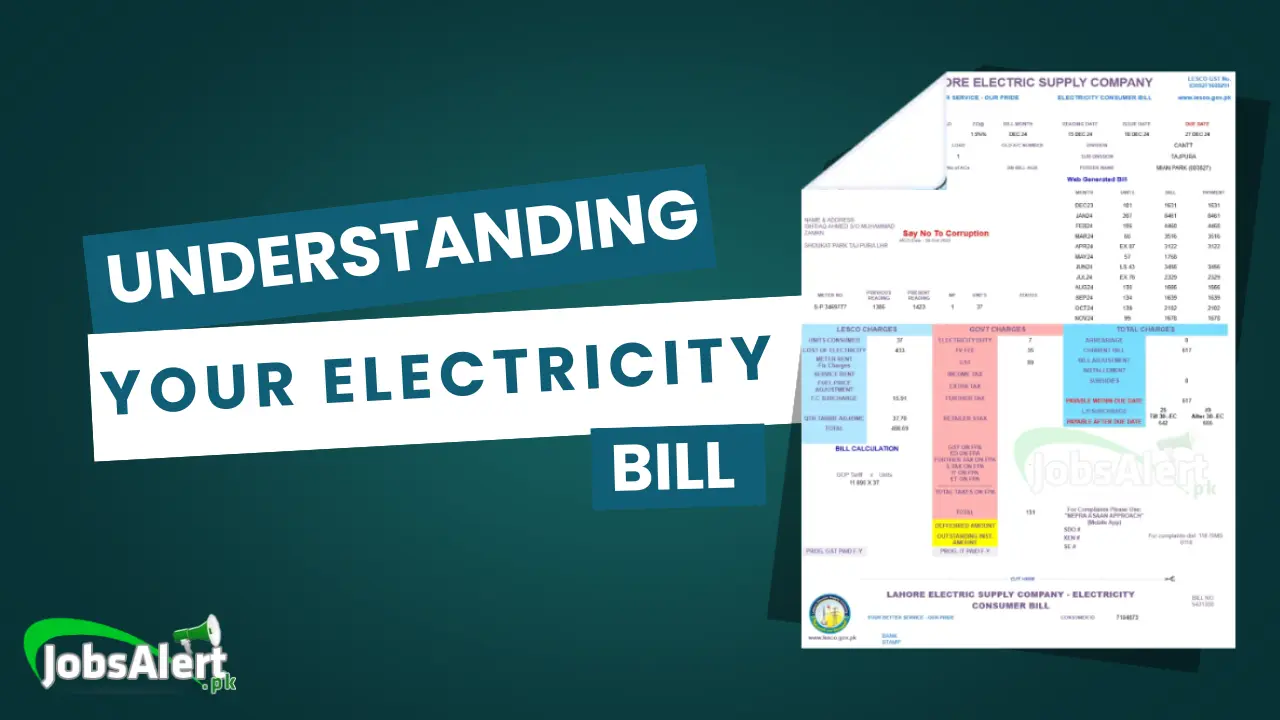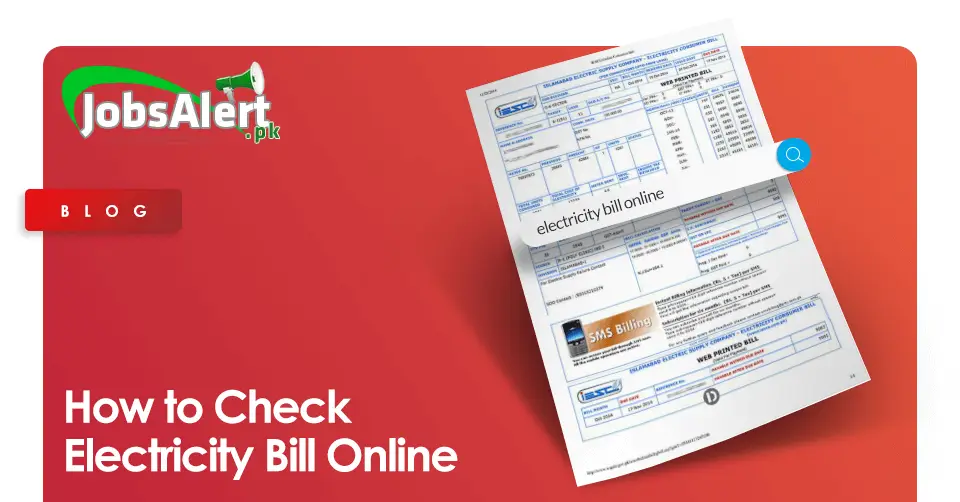Table of Contents
Introduction: Taking Control of Your Electricity Costs
With rising electricity tariffs and increasing energy demands, Pakistani households are feeling the pinch of high utility bills more than ever. The good news is that you don't have to break the bank to stay comfortable in your home. By making some strategic changes to your energy usage habits and implementing a few smart solutions, you can significantly reduce your electricity bills.
This comprehensive guide provides 10 practical and effective ways to lower your electricity consumption without sacrificing comfort. These tips are specifically tailored for Pakistani homes and climate conditions, taking into account local electricity rates, appliance availability, and environmental factors.
Before diving into specific strategies, it's worth understanding what contributes to your electricity bill. If you're not familiar with how your bill is calculated, check our detailed guide on Understanding Electricity Bill Components.
1. Optimize Your Air Conditioning
Air conditioning typically accounts for 40-60% of summer electricity bills in Pakistani homes. Here's how to keep cool without the high costs:
Set the Right Temperature
One of the most effective ways to save on air conditioning costs is to adjust your temperature setting.
The Magic Number: 26°C (78-79°F)
Setting your AC at 26°C instead of 22°C can reduce your cooling energy consumption by up to 30%. Each degree below 26°C increases energy consumption by approximately 5-7%.
Regular Maintenance Matters
Proper maintenance ensures your air conditioner runs efficiently:
- Clean filters monthly - Dirty filters restrict airflow and reduce efficiency by 5-15%
- Service your AC annually - Professional servicing keeps your system running at peak efficiency
- Keep outdoor units clear - Ensure there's no vegetation or debris blocking the outdoor unit
- Check for refrigerant leaks - Low refrigerant levels force your AC to work harder
Smart Cooling Strategies
Implement these additional strategies to maximize cooling efficiency:
- Use ceiling fans - They can make a room feel 4°C cooler while using just 10% of the energy of an AC
- Cool only occupied rooms - Close doors to unused rooms to concentrate cooling where needed
- Utilize night cooling - Open windows at night when temperatures drop and close them before sunrise
- Install window reflectors - Reflective films or coverings on sun-facing windows reduce heat gain
- Seal leaks around doors and windows - Prevent cool air from escaping and hot air from entering

2. Switch to Energy-Efficient Lighting
Lighting accounts for approximately 10-15% of a typical household's electricity consumption. Upgrading your lighting is one of the easiest and most cost-effective ways to reduce your electricity bill.
The LED Advantage
LED (Light Emitting Diode) bulbs offer significant advantages over traditional incandescent and even CFL (Compact Fluorescent Lamp) bulbs:
| Bulb Type | Energy Usage | Lifespan | Cost Savings Over 10 Years (Per Bulb)* |
|---|---|---|---|
| Incandescent (60W) | 60 watts | 1,000 hours (about 1 year) | Base case (no savings) |
| CFL (14W - equivalent brightness) | 14 watts | 8,000 hours (about 8 years) | Approx. Rs. 7,000 |
| LED (9W - equivalent brightness) | 9 watts | 25,000 hours (about 23 years) | Approx. Rs. 11,500 |
*Based on average Pakistani electricity rates, 3 hours of daily use, and including bulb replacement costs.
Smart Lighting Habits
Beyond upgrading your bulbs, adopt these lighting habits:
- Turn off lights when not in use - This simple habit can save hundreds of rupees annually
- Use task lighting - Instead of illuminating an entire room, light only the area you're using
- Install dimmer switches - Dimming lights by 25% can save 20% in energy consumption
- Use light-colored walls and furnishings - They reflect more light, reducing the need for additional lighting
- Clean light fixtures regularly - Dust can reduce efficiency by up to 30%
3. Choose and Use Appliances Wisely
Household appliances account for a significant portion of your electricity bill. Making smart choices about which appliances you use and how you use them can lead to substantial savings.
Look for Energy Efficiency Ratings
When purchasing new appliances, pay attention to energy efficiency ratings:
- Energy Star certification - Internationally recognized standard for energy-efficient products
- Pakistan Energy Labels - Local rating system with stars indicating efficiency (more stars = more efficient)
- Inverter technology - Especially important for air conditioners and refrigerators
Refrigerator Efficiency
Your refrigerator runs 24/7, making it one of the biggest energy consumers in your home:
- Set optimal temperature - 3-4°C for the refrigerator and -18°C for the freezer
- Maintain proper clearance - Leave at least 10cm of space around your refrigerator for proper ventilation
- Check door seals - Damaged seals let cold air escape, wasting energy
- Keep it full, but not overcrowded - A moderately full refrigerator retains cold better than an empty one
- Allow hot foods to cool - Before refrigerating, let hot foods cool to room temperature
- Clean condenser coils - Dust-covered coils make your refrigerator work harder
Washing Machine Wisdom
Optimize your washing machine usage:
- Wash full loads - Running your machine at full capacity uses less water and electricity per item
- Use cold water - 90% of the energy used in washing is for heating water
- Skip the pre-wash cycle - For lightly soiled clothes, pre-wash is unnecessary
- Air dry when possible - Line drying clothes saves substantial electricity compared to using a dryer
4. Manage Water Heating Efficiently
Water heating can account for 15-20% of household electricity consumption, especially during winter months in northern Pakistan.
Electric Geyser Optimization
If you use an electric water heater (geyser), try these energy-saving strategies:
- Lower the temperature - Set your geyser to 50-55°C instead of 60°C or higher
- Use a timer - Set your geyser to heat water only during times when you need it
- Insulate your geyser and pipes - Proper insulation keeps water hot longer
- Take shorter showers - Each minute of shower time uses about 2.5 gallons of hot water
- Fix leaky faucets - Even small leaks waste significant amounts of heated water
Consider Alternative Water Heating Solutions
Look into these alternatives to traditional electric geysers:
Solar Water Heaters
Solar water heaters can reduce water heating bills by 50-80%. While the initial investment ranges from Rs. 35,000 to Rs. 80,000, they typically pay for themselves within 3-5 years in Pakistan's sunny climate.
Gas Geysers
In areas with natural gas connections, gas geysers are significantly more economical than electric models. They heat water faster and typically cost 40-60% less to operate than electric alternatives.
5. Eliminate Phantom Power Consumption
"Phantom power" or "standby power" refers to the electricity consumed by devices when they're turned off but still plugged in. This hidden energy drain can account for 5-10% of your electricity bill.
Common Phantom Power Culprits
These devices typically continue to draw power even when "off":
- TVs and entertainment systems
- Computers, monitors, and printers
- Mobile phone chargers left plugged in
- Microwave ovens with digital displays
- Game consoles
- Set-top boxes and satellite receivers
How to Control Phantom Power
Implement these strategies to eliminate phantom power waste:
- Use power strips with switches - Turn off multiple devices with one switch
- Unplug seldom-used devices - If you use something infrequently, unplug it when not in use
- Invest in smart plugs - These allow you to control devices remotely or on a schedule
- Enable power management features - Configure your electronics to enter deep sleep modes

6. Maximize Ceiling Fan Efficiency
In Pakistan's hot climate, ceiling fans are essential and far more energy-efficient than air conditioners. Using them strategically can reduce your cooling costs dramatically.
Choose the Right Fan
Not all ceiling fans are created equal:
- Look for high CFM ratings - CFM (Cubic Feet per Minute) indicates airflow; higher is better
- Check the blade pitch - A pitch of 12-14 degrees provides optimal airflow
- Consider DC motor fans - They use up to 70% less electricity than traditional AC motor fans
- Select the appropriate size - A fan that's too small won't cool effectively; too large may create uncomfortable turbulence
Room Size to Fan Size Guide:
- Small rooms (up to 75 sq ft): 29-36 inch fan
- Medium rooms (76-144 sq ft): 42-48 inch fan
- Large rooms (145-225 sq ft): 52-56 inch fan
- Very large rooms (225+ sq ft): 60 inch fan or multiple fans
Smart Fan Usage
Maximize the cooling effect of your ceiling fans:
- Run fans counter-clockwise in summer - This creates a direct downdraft for cooling
- Run fans clockwise in winter - This recirculates warm air that rises to the ceiling
- Use fans in conjunction with AC - This allows you to set your AC 4°C higher while maintaining comfort
- Clean fan blades regularly - Dust on blades reduces efficiency and circulates allergens
- Turn fans off in unoccupied rooms - Fans cool people, not rooms
7. Improve Your Home's Insulation
Proper insulation helps keep your home cool in summer and warm in winter, reducing the workload on your cooling and heating systems.
Affordable Insulation Solutions
Even without major renovations, you can improve your home's insulation:
- Weather-strip doors and windows - Reduces air leakage by up to 30-40%
- Install door sweeps - Prevents hot/cold air from entering under doors
- Apply window films - Reflective films can block 70% of solar heat gain
- Use heavy curtains - Thermal curtains can reduce heat gain by up to 33%
- Seal gaps around pipes and cables - Use caulk or expanding foam for these often-overlooked leakage points
Long-term Insulation Investments
For homeowners looking to make more significant improvements:
- Roof insulation - In Pakistan's hot climate, roof insulation provides the highest return on investment
- Wall insulation - External wall insulation can reduce heat gain by 20-30%
- Double-glazed windows - These can reduce heat transfer by up to 50% compared to single panes
- White or reflective roof coating - Can lower roof temperatures by 30-40°C and interior temperatures by 3-5°C
8. Consider Solar Energy Solutions
With over 300 sunny days annually in most parts of Pakistan, solar energy offers a viable solution to high electricity bills. Solar solutions range from small investments to comprehensive systems.
Solar Options for Different Budgets
Solar Fans & Lights
Investment: Rs. 5,000-25,000
- Solar DC fans
- Solar LED lights
- Small solar chargers
Best for: Immediate relief from load shedding for essential needs with minimal investment
Partial Solar System
Investment: Rs. 150,000-300,000
- 1-3 kW system
- Powers essential appliances
- Battery backup for nighttime
Best for: Families wanting to reduce dependence on grid electricity for essential loads
Complete Solar Solution
Investment: Rs. 500,000-1,500,000+
- 5+ kW system
- Powers entire home
- Grid-tied with net metering
Best for: Homeowners looking for complete energy independence and long-term savings
Net Metering Benefits
Pakistan's net metering policy allows solar system owners to sell excess electricity back to the grid:
- Faster return on investment - Typically 3-5 years in urban areas with high electricity rates
- No battery requirement - Grid-tied systems can operate without expensive battery storage
- Simplified billing - You're billed only for the net electricity consumed
- Zero waste - All generated electricity is either used or credited
For more information on solar installations and net metering, contact your local electricity distribution company or visit the NEPRA net metering portal.
9. Adopt Energy-Efficient Cooking Methods
Kitchen appliances can be major electricity consumers. Changing how you cook can lead to significant energy savings.
Choose the Right Cooking Appliance
Different cooking methods use different amounts of energy:
| Cooking Method | Energy Efficiency | Best Uses |
|---|---|---|
| Microwave | High (70-80% efficiency) | Reheating, defrosting, small portions |
| Induction Cooktop | High (85-90% efficiency) | Fast cooking, boiling, frying |
| Electric Kettle | High (80-85% efficiency) | Boiling water only |
| Gas Stove | Medium (40-50% efficiency) | All-purpose cooking (economical where gas is cheaper than electricity) |
| Electric Coil Stove | Low (30-40% efficiency) | Avoid when possible |
| Electric Oven | Very low (12-25% efficiency) | Use sparingly, only for baking/roasting |
Energy-Saving Cooking Tips
Follow these practices to minimize energy consumption while cooking:
- Match pot size to heating element - Using a small pot on a large burner wastes 40% of the heat
- Use lids when cooking - This can reduce energy usage by up to 60%
- Use pressure cookers - They reduce cooking time by 50-70% for lentils, rice, and meat
- Defrost food in the refrigerator - Not in the microwave
- Cook multiple items simultaneously - When using the oven, cook several dishes at once
- Use residual heat - Turn off electric burners a few minutes before cooking is complete
10. Adopt Energy-Conscious Behaviors
Beyond technological solutions, simple behavioral changes can have a significant impact on your electricity consumption.
Energy-Saving Daily Habits
Incorporate these practices into your daily routine:
- Set electronics to energy-saving mode
- Air-dry clothes instead of using dryers
- Open curtains for natural light instead of using electric lights
- Adjust refrigerator settings seasonally
- Use sleep timers on TVs and electronics
- Run heavy appliances during off-peak hours
- Unplug devices when going on vacation
- Keep refrigerator doors open for minimal time
- Use natural ventilation when weather permits
- Synchronize family members' electronics charging times
Get the Whole Family Involved
Energy conservation works best when everyone participates:
- Create an energy-saving challenge - Make it fun with small rewards for reducing consumption
- Educate children about energy costs - Help them understand the impact of their habits
- Assign energy management responsibilities - Rotate "energy monitor" duties among family members
- Share the savings - Use some of the money saved on bills for family activities
Track Your Electricity Consumption
Monitoring your usage helps identify areas for improvement:
- Read your meter regularly - Weekly readings help track patterns
- Use energy monitoring devices - These can identify which appliances consume the most power
- Compare bills month-to-month and year-to-year - Look for trends and improvements
- Set consumption targets - Challenge yourself to reduce consumption by a specific percentage
Conclusion: Small Changes, Big Savings
Reducing your electricity bill doesn't require massive lifestyle changes or expensive renovations. By implementing these 10 strategies, you can significantly lower your energy consumption while maintaining comfort and convenience.
Remember that energy efficiency is an ongoing process. Start with the easiest and most affordable changes, then gradually incorporate more comprehensive solutions as your budget allows. Even small adjustments can lead to noticeable savings on your monthly bill.
For more information about understanding your electricity bill, check our guide on Understanding Your Electricity Bill Components, or learn about different payment methods in our article on Electricity Bill Payment Methods in Pakistan.




Comments
Comments are currently disabled for this article.